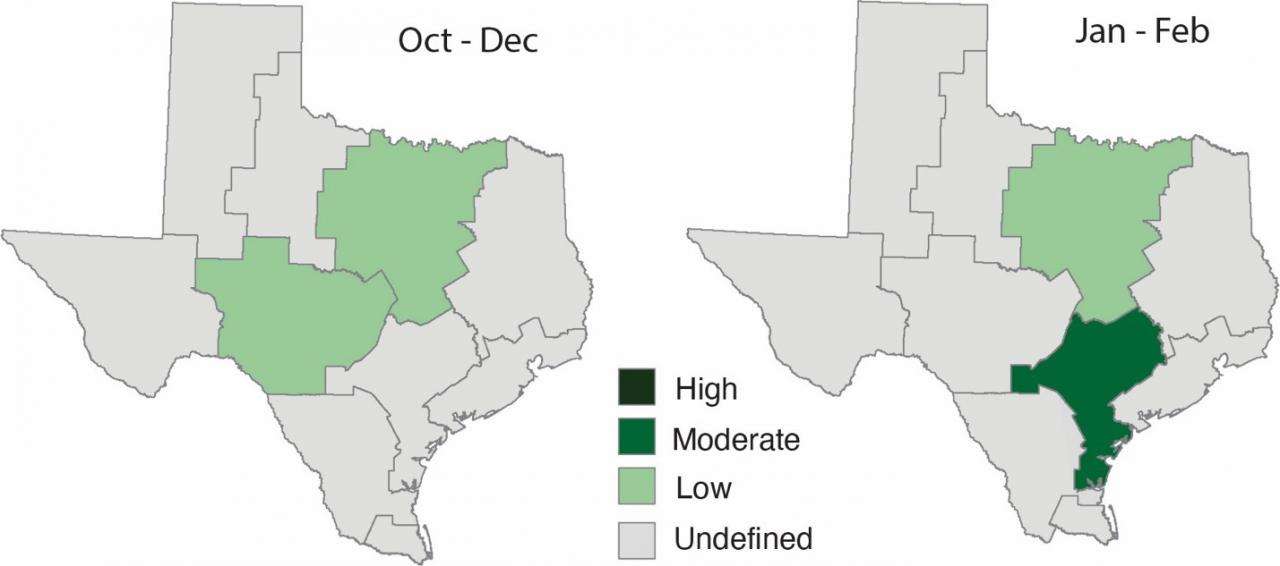The weather is warming, and wheat has started to green up across the state. With the onset of spring weather, it is time to look at factors that could influence the yield potential of the Kansas wheat crop. At the time of this publication, there have been no reports of stripe rust in Kansas. Bryan Simoneaux and Amir Ibrahim, Texas A&M AgriLife Research, reported yesterday that there is moderate stripe rust pressure in Uvalde, TX but no stripe rust in a natural pressure rust nursery in Castroville, TX. Amanda De Oliveira Silva, Oklahoma State University, reported on March 25th that there have been no observations of stripe rust in Oklahoma.
Looking south helps predict stripe rust outbreaks in Kansas
There are several factors that contribute to the development and severity of stripe rust in our region. Weather conditions in Texas are among the important factors that we consider. K-State research suggests that weather in Texas in both the fall (Oct-Dec) and spring (Jan - Feb) can be used to predict the severity of the disease in Kansas in a given season.
A look at the moisture patterns for 2021-22 indicate that the fall was dry in Texas (first map in Figure 1). This likely slowed the production of rust inoculum. There was slightly more moisture in Texas in the spring (second map in Figure 2) which may be more favorable for disease development. What does that mean for us? We likely will have below average levels of spores that arrive in Kansas during our critical growth stages. It’s important to remember that this is just a piece of the puzzle in determining risk. The severity of stripe rust in Kansas after it is first detected will largely be driven by local weather conditions and the varieties that are planted in the state.
We will continue to update on stripe rust occurrence and weather outlook as we move toward critical growth stages for fungicide applications in Kansas over the next several weeks.

Figure 1. K-State research has shown that annual severity of strip rust outbreaks in Kansas can be predicted by soil moisture in key regions of Texas in both the fall and the early spring. In 2021, soil moisture in Texas was low (indicated by light colors on the map). In the spring, there was moderate soil moisture in one of the key regions of Texas. These maps show soil moisture levels based on November “Palmer Z-Index” provided by NOAA-National Centers for Environmental Information.
Please contact us (andersenk@ksu.edu) if you detect stripe rust in Kansas so we can update regional maps.
Kelsey Andersen Onofre, Extension Plant Pathologist
andersenk@ksu.edu
Erick De Wolf, Plant Pathologist
dewolf1@ksu.edu
Tags: wheat stripe rust foliar diseases